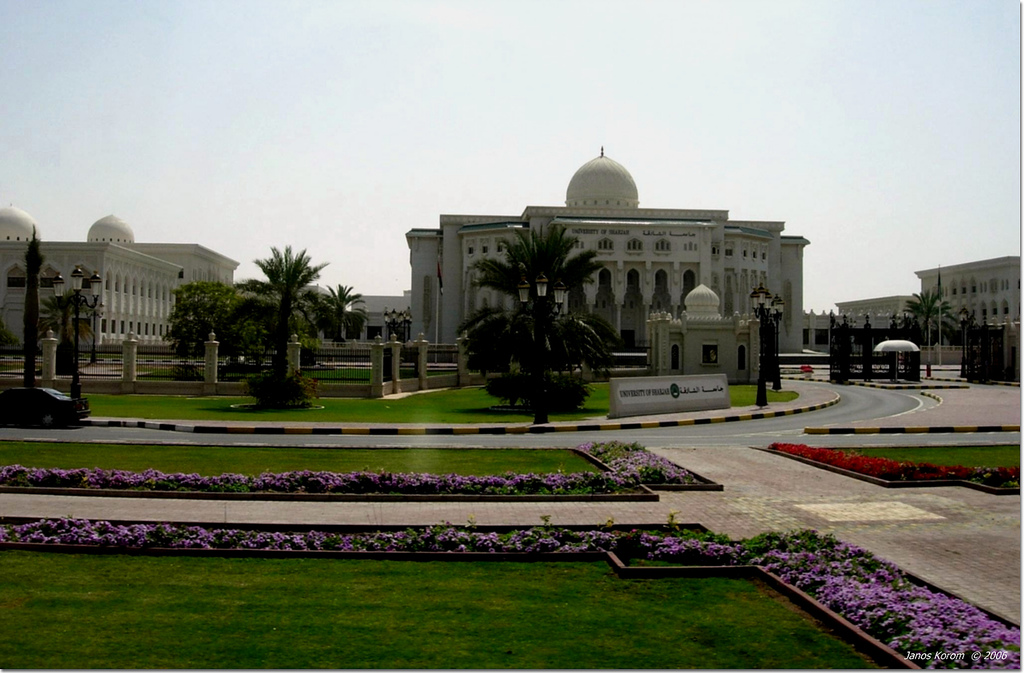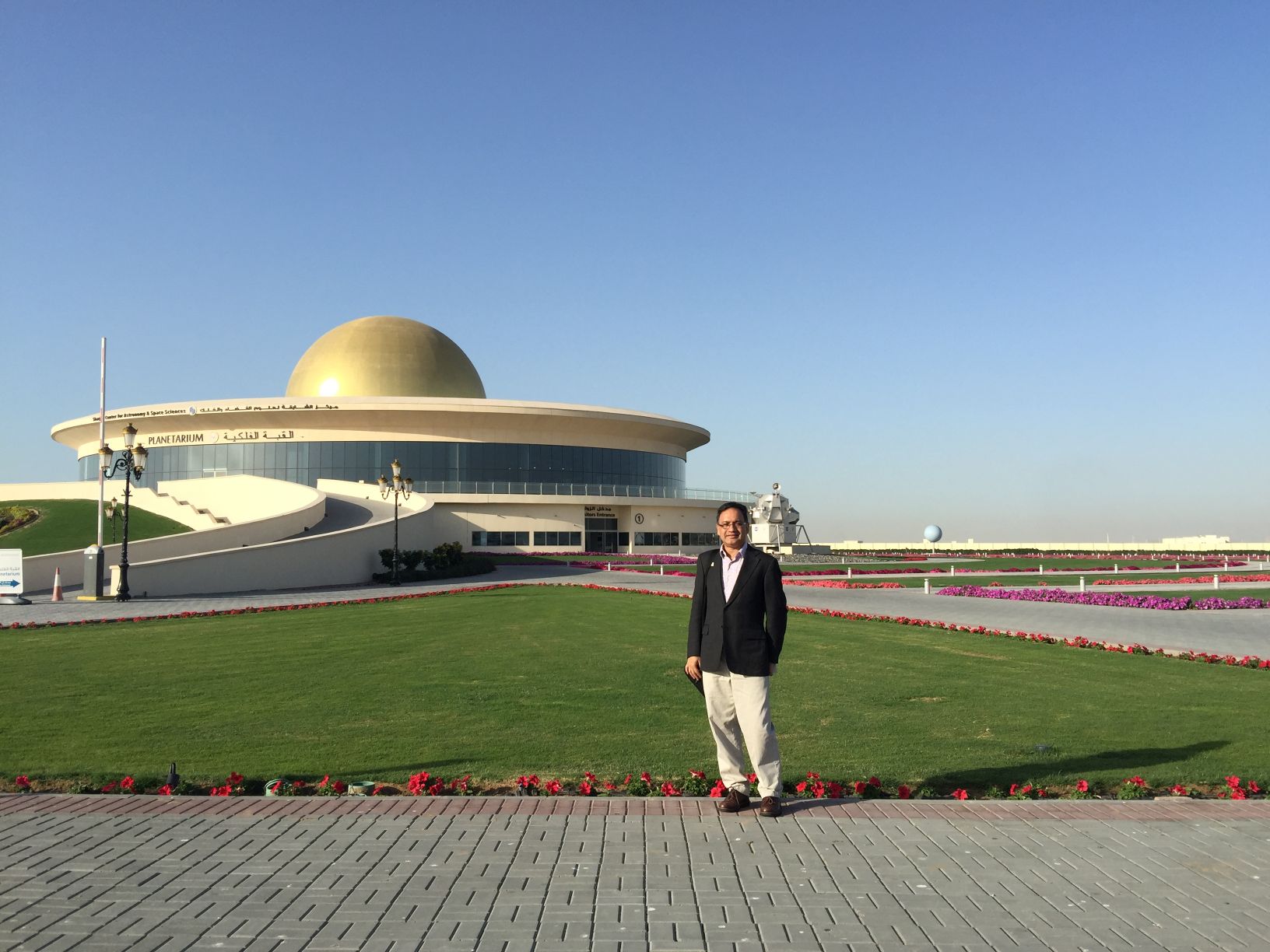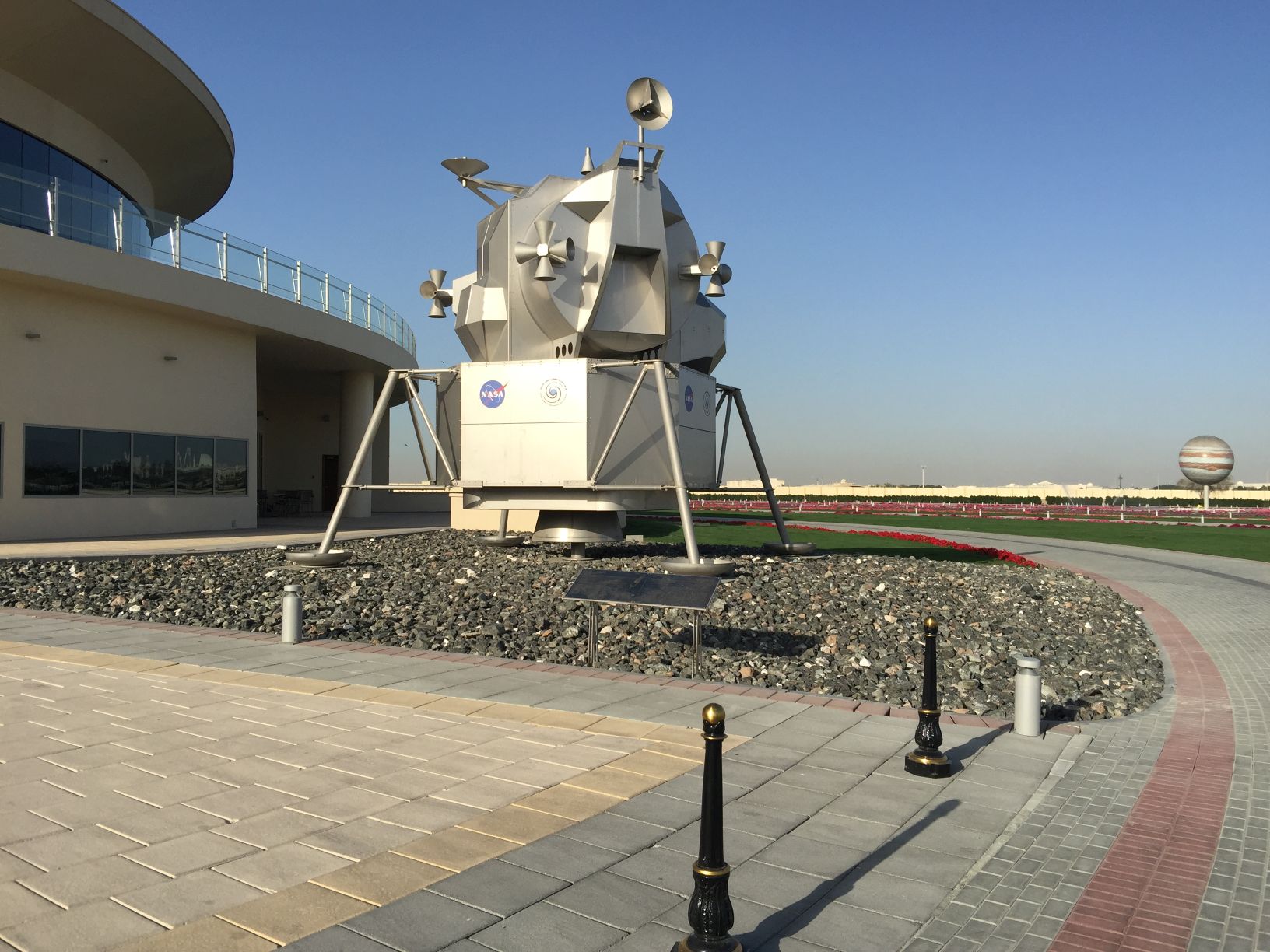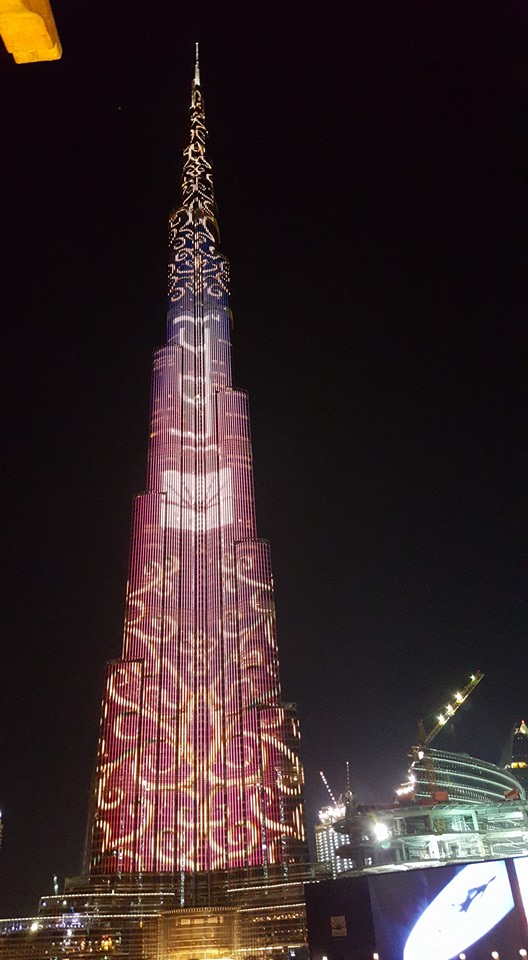

Sharjah University (left), and the American University of Sharjah (right).
Earlier this year I visited the United Arab Emirates (UAE) and spent part of my time there as a visitor at Sharjah University. Sharjah is one of the seven emirates that make up the UAE. I also visited the more well known emirate of Dubai. This was a very enlightening trip for me to a part of the world I had never visited before, and I found many opportunities emerging there. I was a guest of the Department of Applied Physics (now renamed to Department of Applied Physics and Astronomy - more on that later). Sharjah has historically been a hub for education in the UAE, and one cannot help but be in awe of the sprawling campuses and imposing white arabesque architecture of Sharjah University and the neighboring American University of Sharjah.


Sharjah University (left), and the American University of Sharjah (right).
Hospitality to guests is an important part of the culture in this part of the world and I truly appreciated the warm greetings from a wide range of people, including Dean of Science Dr. Majid Merabti, Chair of Applied Physics Dr. Gaffar Attaelmanan, and many other faculty and some very eager students. Dr. Merabti highlighted how Sharjah University is trying to make the transition to a research intensive university. The highlight of my stay was to visit the newly built and sparkling Sharjah Center for Astronomy and Space Sciences, which houses a planetarium and space science museum. I was hosted by its Manager Dr. Ilias Fernini and gave a public lecture on The Life and Death of Stars. This was a first-time experience for me in two ways - I was speaking inside a planetarium with my slides projected onto a side of the dome, and my talk was being translated in real time as I spoke! The translation into Arabic was done very ably by the Planetarium Manager Marwan Shwaiki. About half the audience was listening to me directly and the other half had headphones and listened to Marwan's translation. I also learned that many of the faculty and staff members are in the UAE on work visas and originate from other countries. I met faculty members from Algeria, Egypt, Jordan, Palestine, Sudan, and even...Canada! There are several citizens or PR holders of Canada amongst the faculty members.


The Sharjah Center for Astronomy and Space Sciences. The replica moon lander outside SCASS looks eerily at home on a desert landscape.
I spent a few days in Dubai, which is now one of the world's great multicultural hubs, with a large expatriate population that significantly outnumbers the local population. Walking around the city center amongst gleaming skyscrapers one can hear a multitude of languages, e.g., Arabic, Bengali, English, French, German, Hindi, Malayalam, Russian, Tagalog, or Urdu. People seem to be enjoying themselves with extensive options for shopping, dining out, and nightlife. Some but not all restaurants have liquor licenses. Men and women seem to dress as they might back in their home countries and women drivers are a common sight, unlike in neighboring Saudi Arabia. Enjoying the temperate February evening breeze at an outdoor cafe by the Burj Khalifa, the world's tallest building, I was experiencing something completely new. I could order a meal in Bengali while sitting under skyscrapers on a riverfront resembling Chicago, and watch a night fountain and light show set to iconic American themes like the soundtrack of The Magnificent Seven and Michael Jackson's Thriller. Gasp, there was even an outlet of Tim Hortons nearby. I was getting confused about where I was. But wait, this is exactly the uniqueness of the UAE experience! Wherever you are from, you may find a bit of your background here, and learn about that of others, with Arabia as your backdrop.



The Burj Khalifa, world's tallest building, lit up in ever changing ways at night. Tim Hortons in Dubai, where you can order cardamom chai.
The UAE has come a very long way in just half a century, from a sleepy outpost for date-growing and pearl-diving in the hottest part of the Arabian penisula where few people wanted to live, to a gleaming (and highly air-conditioned) center of international commerce. Some eighty-five percent of people in the UAE are foreigners living on work visas. The world has literally come to the UAE, from the armies of workers who power the construction and service industries, to the businesspeople looking to make their fortune, to those who have already made a fortune elsewhere and are enjoying the lifestyle here. The world is dealing with many effects of globalization, both good and bad, and a more complete perspective on global affairs can be obtained by visiting the unique hub that is the UAE. An interesting read on the history and current situation there can be found in the book Dubai, The Story of the World's Fastest City, by Jim Krane, which takes a critical look at both the successes and the problems of the emirate. The UAE is now becoming an education hub for students from across Asia, and it wants to foster major engineering/science projects like the Mars Mission. It will be very interesting to track the UAE's progress in these areas in the next decade and beyond.
Posted October 2016